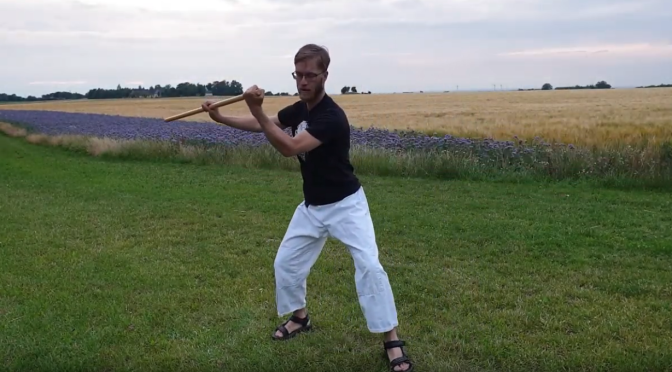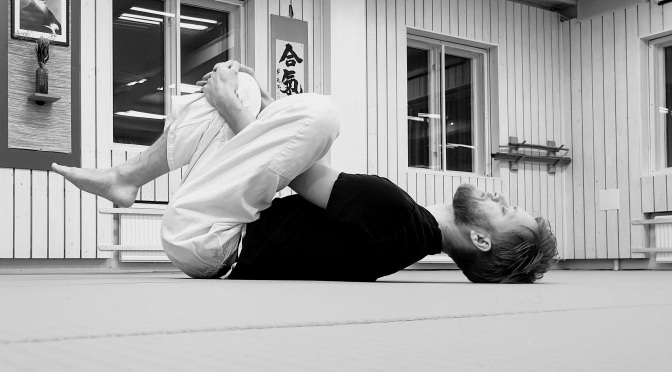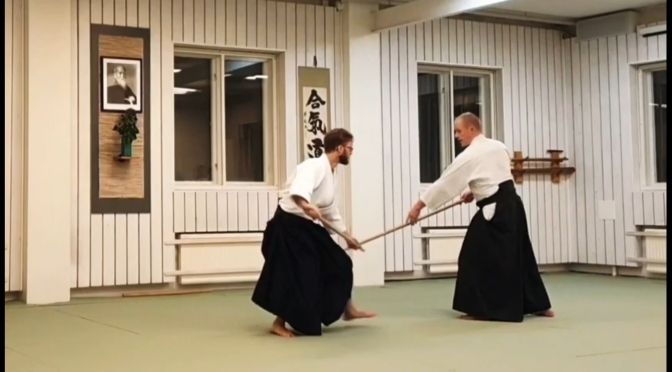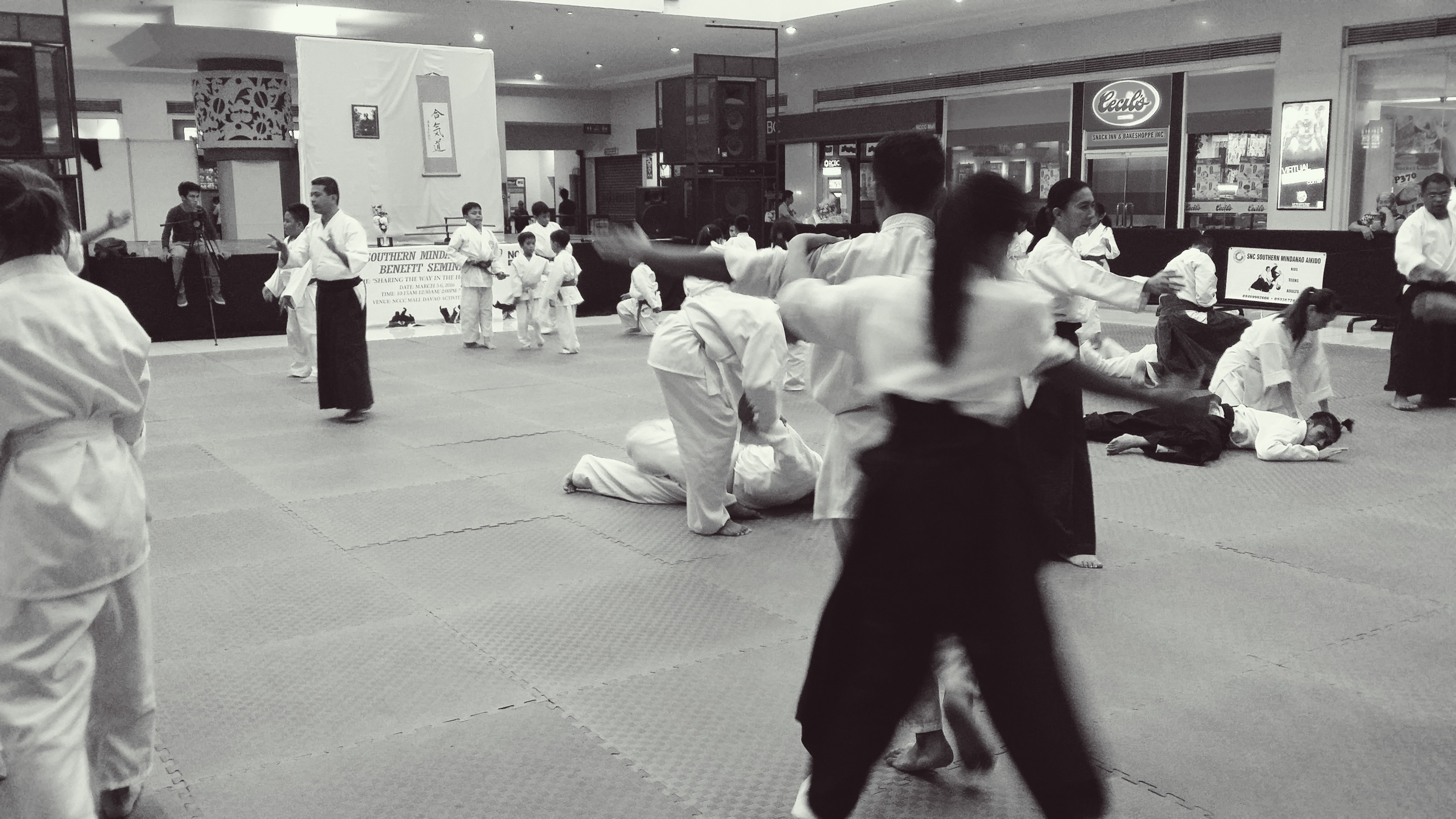Aiki-jo is usually what is referred to when people who train aikido workout with the 4 feet wooden staff, the Jo. The founder of aikido, Morihei Ueshiba, used the Jo as a training tool, and because of this fact basically all aikido groups and organizations around the world today do too. Morihiro Saito sensei, one of the founder’s closest students and the one who received extensive direct instructions on the aiki-jo from him, explained that he took the movements from the various parts of the founder’s aiki-jo, and broke them down into 20 isolated exercises, the jo suburi.
The point of the suburi is two-fold:
1. to learn the external forms of the founder’s aiki-jo, basically to learn the moves which are used in the paired training,
2. and to provide a means to, on your own, train to use your body as one dynamic unit, every part connected – ground, legs, arms, head and jo – via the dantien in the middle. That is, to inform and improve your aikido, and mainly the empty-handed part of aikido at that.
It is the second point which is my own main focus when I train with the Jo these days. Saito sensei said that the founder would refer to this second point as (aiki)ken-tai-(aiki)jo no riai, that is, the principle of unity between the aikijo, aikiken and use of body (and by extension the empty hand techniques) in aikido. To that end, when I train and teach the suburi I do so in a way to make sure that the suburi are practised so as to inform the empty-handed part of aikido – and vice-versa – not to act to develop as a separate skill parallel to aikido, such as training in jodo or iaido for example. Don’t get me wrong, I know of plenty of excellent aikido exponents who’s main weapons work comes from jodo and iaido, or derivatives of these schools. Many times their ability to wield and use the Jo and japanese sword as weapons are way superior to mine.
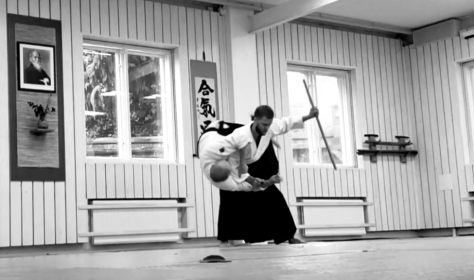
However, if the points of the aiki-jo in general, and the jo suburi in particular, are the two mentioned in the previous paragraph, then the inside forms – what is going on inside the body – are important, more important in fact than the external shape of the suburi.
There are a lot of videos of the 20 suburi. For reference I refer to you mainly to those where Morihiro Saito sensei himself display, as well as talk about the history of them. Today you can find videos as early as the 1960’s and all the way to 2000’s of him showing the suburi. One favourite of mine I already highlighted in a previous post: Personal reflections on a 1979 video of Saito M showing aiki-jo and aiki-ken. There are also many videos by very senior direct students of Saito sensei showing the 20 suburi.
However, in an attempt to keep my own record of the suburi as well as to highlight some important points for each suburi which I feel unlock the true potential of the Jo suburi as tools for building an aiki body, I have finally put together a series of 6 videos of my own. The first five videos include the five sets: tsuki (thrust forms), uchi-komi (striking forms), katate (one-handed forms), hasso gaeshi (parry into hasso kamae forms), and nagare gaeshi (flowing/inter-connecting forms). In these videos I give comments to the individual suburi and they therefore range between just under 5 minutes to just about 11 minutes long. In the sixth video I simply run through the whole set of 20 suburi, one time each and without explanation (and without 100% precision to be honest). I filmed them all in one take in front of a lovely field but was interrupted a couple of times by passersby people, and I had to take care not to flip the whole tripod by getting entangled in the microphone cord. I therefore had to edit them a bit, I know I missed some important points, and the quality might be lacking at times. Still, they are nevertheless uploaded for all to enjoy… or not.
You find all six videos here on my video page and I will include one of them just as a sample in this post:
You will also find all of them in a playlist “Jo Suburi” on my YouTube account.
Please note that it is always best to get feedback from an instructor who are trained in these suburi by Saito or one of their direct students, in order to get the important details which otherwise might be lost by just looking at a video.
Keep it playful!
Text and video by Jakob Blomquist
